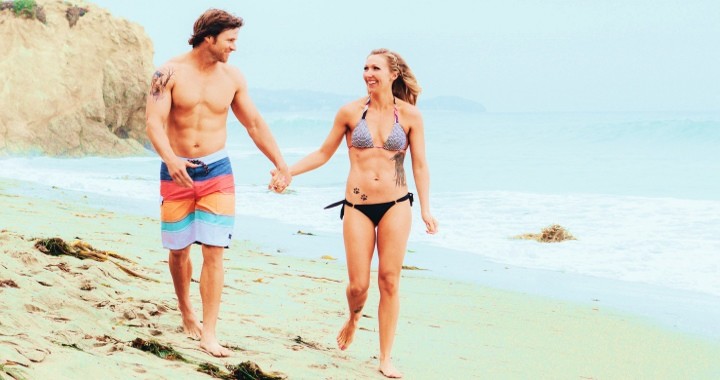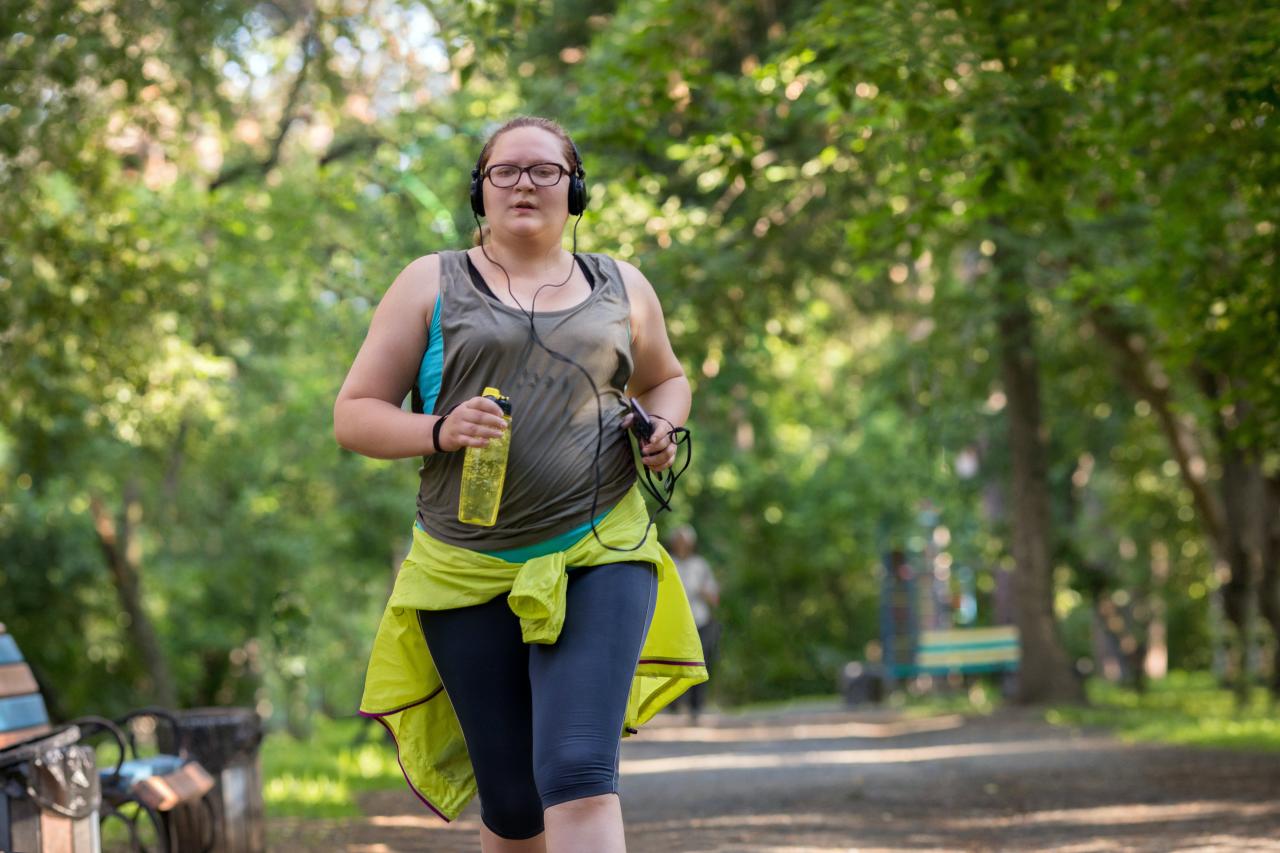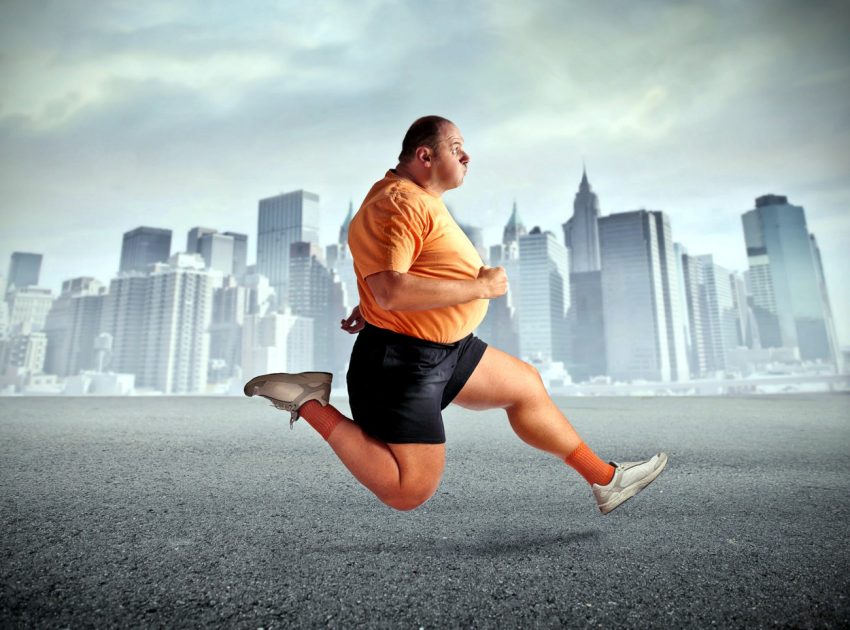Overweight jogging is an issue that affects many runners, including myself. As a heavy runner, some rules of running are a little different. This is often ignored or forgotten at the expense of the health of the affected runners. With this article I want to point out a few things that serious runners should pay particular attention to.
What does a typical runner look like? Most people would probably imagine something like a slim to wiry person with long legs. In fact, the average German amateur and recreational runner is a bit overweight. That is certainly not the reason. Rather, being overweight is often a reason for many people to start jogging . This is a good thing in and of itself, but there are a few special things to keep in mind, especially for beginners.
The thing about being overweight shouldn’t be misunderstood. You don’t have to be fat to fall into this category. With a BMI of 27, I myself am at the end of my last diet (I am subjectively particularly slim and full in the running season) technically still slightly overweight.

One thing in advance: It’s great to dare to go out on the track even as a “difficult” runner and to set the goal of getting sporty . However, your focus should always be your health. For this reason I have put together a few tips for you, what you should pay particular attention to if you, like me, belong to the group of not so feather-light runners.
1) Visit a doctor
Basically, I advise anyone who starts running to visit a doctor and get a check-up. If you are a little heavier, this is even more true. There are simply a few health risks that may otherwise go undetected. In any case, have a stress ECG done to rule out possible undetected cardiovascular diseases.
If you get any discomfort later while running, you should (again) see a specialized doctor. I know too many people who said “it’ll work out”, who later regretted very much that they didn’t see a doctor earlier
Especially as a difficult runner you go along a short visit to the doctor to be on the safe side.
Especially when jogging if you are overweight, the load on the musculoskeletal system is greater, and incorrect strain and injuries can quickly lead to increased wear and tear and possibly long-term deterioration of the condition. Better not take that risk.
2) Do some running coaching or training with
When jogging if you are overweight, incorrect movement patterns and a bad running style can quickly have negative effects. As already mentioned, the forces acting and therefore also signs of wear and tear are much stronger than with light runners.
If you are still at the beginning of your running life, you should definitely take part in running coaching or training in order to develop good running technique. That generally makes sense and I recommend everyone (even easy runners) to do something like this. The greater your body weight, the more useful such coaching is for you.
Tip: It is best to make sure that your running training also includes a video analysis with subsequent advice and a check-up after a few months. That would really be top notch!
Even as an experienced runner, it makes perfect sense to take part in such a training every now and then and have a run analysis done. The personal running style changes over time, just like physiological conditions often change through running. If you lose weight (by jogging), the latter is especially true. In addition, over time, “mistakes” can creep in that you don’t even notice, but which a trainer can point out to you with a trained eye.
So do some running training every now and then, then you have the best chance of getting the most out of running and at the same time minimizing the risk of injuries.
3) Give your body a lot of time
Everyone has to get their bodies used to running. Tendons, ligaments, joints, in general the whole body has to adapt to the new stress stimuli. It takes a few months. For this reason, every beginner runner should take it slowly at the beginning, not to overdo it with speed and distance and, above all, allow himself enough time for regeneration.
When jogging if you are overweight, the body can take longer to adapt to the new load than for light runners. After all, the forces acting are even greater.
4) Don’t run (immediately) on difficult surfaces
Cross, trail and obstacle runs are very popular right now. Some beginners tend to set themselves an event like a Tough Mudder as their goal. That is absolutely ok too. I can understand that, after all, I started running with similar goals.
Since the risk of injury is particularly high when jogging if you are overweight, you should first get your body used to simple running with increasingly longer distances. Flat roads and paved forest paths are the best surface with the right shoes.
Even if it is physiologically possible for most people to get fit enough to get through such a run with very little last minute tough mudder) training , I recommend waiting until that runs well with “normal” running. As a rule of thumb, I would wait at least a year from the first training run to the first obstacle run.
5) Don’t just run to lose weight, but take the chance
Many overweight people mainly start running because they think it is the best way to lose weight. However, they often tend to overestimate this effect. It’s best to read my article on Lose weight by jogging . Above all, you should never underestimate the importance of proper nutrition.
In fact, with strength training you can contribute more to the loss of body fat in the same amount of time. This way you are more likely to get the defined body that most people want.

You can only get such a beach body if you do strength training in addition to running in your diet.
Running is a great sport to support weight loss and it is also very healthy if you do it right. However, you shouldn’t just start running and then rely on it to lose weight.
If you are very overweight, you should definitely lose weight. The negative health consequences of being overweight do not only have a negative impact on running. In addition to effective strength training and a low-calorie diet, running can support you very well.
6) Be proud and tell others about your successes
Especially as an overweight, heavy runner, you are sometimes ashamed and don’t tell anyone that you ran.
I know that from myself. When I started running before I was about 100 kilos and that wasn’t nearly as much muscle mass as now ( more about my transformation ). My first runs were incredibly short and very slow. I didn’t dare post it or even talk about it. I should have done just that.
I am convinced that it will help you to share your successes with friends and like-minded people. It doesn’t matter how small they seem to you. Jogging if you are overweight is not something to be ashamed of, but something that you should be particularly proud of. You have taken the first steps and should share them with the people who are important to you. Anyone who is on your side and would like to support you will find out about it and can help you to overcome your inner weaker self even easier .
7) Pay special attention to the right running shoes
So many aspiring runners pick the first shoe they can get their hands on. To start with and try it out, every sneaker should go, right ?! No! Please get yourself a pair of decent running shoes right from the start and ideally do a running analysis right away. Your feet will thank you forever!
In no case should you try to save money here and just buy yourself a pair of running shoes from the discounter if you are lucky. That can be really bad. After all, when you run, forces act on your joints several times higher than your body weight. The connection between your feet and the ground should be the right one for you and your running style. A robust and durable shoe is therefore also sensible, since the greater load naturally also leads to faster wear of the material.
That a heavy runner always needs a stable shoe with a pronation support is a persistent rumor.

8) Buy yourself a pair of new running shoes more often
It is generally said that running shoes should be sorted out after about 1,000 kilometers and no longer used for running. When jogging with overweight, the shoe should be changed significantly more often.
Personal demands on the right shoe also change over time. Your running style becomes more stable and safer, your running technique changes as you drop in weight and experience increased. Sometimes conscious changes are introduced (e.g. through running coaching).
All of this means that after a few months the current shoe may no longer be the best for you. So always do a running analysis to have it checked and get a pair of new running shoes every 500-700 kilometers. So you play it safe.

